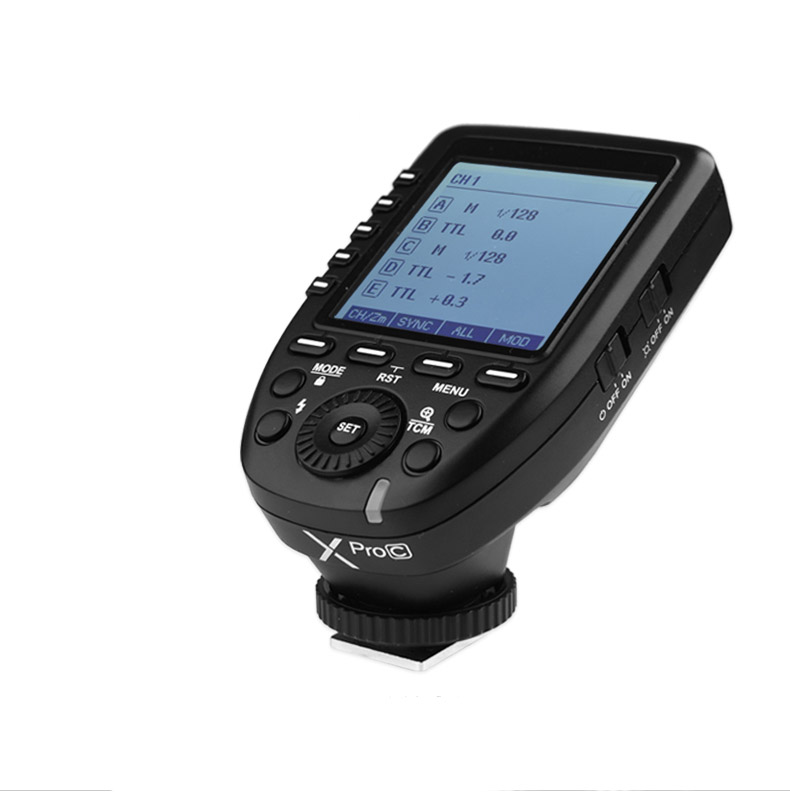September 8, 2021
Godox V1 Camera Flash
If you need a reliable and affordable camera flash on the go, then you can't go wrong with the Godox V1

Over the last few months, I have been shooting quite a lot of portraits. It’s really great fun to be out and about shooting on location, but it also needs quite a bit of gear to get a professional-looking headshot. In the past, I have used Elinchrom Quadra Pro lights, which are fantastic but heavy. The other solution has been to use a couple of Canon or Yongnuo 600 Speedlites and a transmitter, which are light but can be unreliable with the connection between the transmitter and the lights. I’ve been looking for a better solution, and I may well have found it with the Godox V1 camera flash and the Godox X Pro transmitter.
What’s different with Godox?
On the face of it, the Godox V1 is just another flashgun, but even at first glance, it is very different. Usually, the head of a flash is rectangular, not the Godox V1. The light source is circular, so it distributes the light much more evenly than a regular flashgun. It’s almost like having a studio light in your pocket.

Unlike most flashguns, the power doesn’t come from AA batteries, but instead, the Godox V1’s come with their own proprietary batteries. These Panasonic Li-ION batteries will give 480 shots at full power. Even more impressive is the recycle time of 1.5 seconds which is much better than the 3.3 seconds for the Canon 600 speedlites. The Godox V1 is slightly less powerful than the Canon 600’s, but to be honest, most of the time, when I am using flash, the light is close to the subject, so I’m not using the full power anyway.
The other feature I like is the two-step motion to unlock the lights from your camera or stand. I am used to having a single flick motion to loosen the grip between the hot shoe and camera. Sometimes, this could lead to the flash dropping to the floor, which is never a good thing! Godox has added a button press to the removal mechanism, and it now gives me lots of confidence that my lights will stay where they are supposed to be.
Great for modifiers
The final thing I love about the Godox V1 is the way you attach modifiers to the unit. I have previously used the Rogue 3 in1 grid system, which is attached using some Velcro. It was effective, but it could also fall off easily. The V1 flash has magnets around the edge of the flash. By adding the optional AK-R1 accessory kit, you can securely attach the diffusion ball, colour filters, honeycomb, snoot and barn doors without any risk of them dropping off.

Remote control
My primary rationale for switching flash systems was a more reliable system when shooting with the flash off-camera. To do this, you need to have a transmitter mounted on the hot-shoe, which communicates with the flashes. The old Yongnou one was good when it worked, but if you’d had a few minutes break, it had lost contact with the lights. Re-connecting needs a particular order to switch everything off and then back on. It was known as the top-down method with the lights switched on first, then the transmitter, then the camera – any other combination and the lights didn’t work. When you’re working with clients, this dance between several lights doesn’t look too professional.

The Godox system uses the X Pro transmitter. No matter what order you switch things on, the connection between the transmitter and lights just work. You can rely on the lights triggering every time, which allows you to concentrate on the client and not the lights.
As with most systems, it’s possible to set the transmitter and lights to one of 32 channels. (Remember that you need to set the lights and transmitter to the same channel). You can then add lights to one of five groups allowing you to control the power of lights from the top of your camera. Having a button to select each of the groups makes it much easier than the Yongnou equivalent. I found that I was working more quickly and efficiently on the first use of the system.
Cost and compatibility
The Godox V1 lights are available for Canon, Nikon, Sony, Fujifilm, Olympus/Panasonic and Pentax camera systems. Make sure when buying that you buy the correct flash for your camera. You’ll be able to tell by the letter after the V1 model number. My Canon lights are badged as the Godox V1C; the Nikon ones are V1N, and so on.
You can pick up a flash for around £229 each, which is about £130 cheaper than the Canon 600EX but around £100 more expensive than the Yongnuo 600EX lights. You’ll need to add another £60 for the X Pro transmitter. If you want to add the optional modifier kit, that will be an extra £53. So for a little over £500, you could have a studio-quality portable lighting system. More importantly, it’s also not going to let you down when shooting clients. I can highly recommend it!
Give us your feedback
If you’ve got any questions or comments, leave them below. You can sign up for the Edinburgh Photography Workshop monthly newsletter, where you’ll get regular updates on exciting things happening in photography and some great tips. Sign up by clicking here.
About the author
As well as running Edinburgh Photography Workshop, Rich Dyson is a professional photographer. His photographs are regularly used in newspapers such as The Times, Guardian and Daily Telegraph. He also had two solo exhibitions as well as being featured in a members sponsored exhibition in the Scottish Parliament. You can see and buy his photography at richdysonphotography.com
